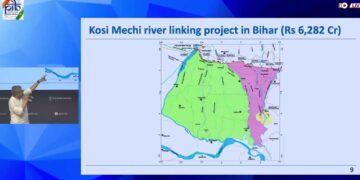A viral video from Bihar’s Saharsa district has drawn national attention after showing around 300 job aspirants taking mock tests on the runway of Saharsa airport. The footage, which spread rapidly on social media, depicts students seated in neat rows on the tarmac, writing competitive exam papers in open-air conditions.
Why Are Exams Being Held on the Runway?
- Coaching academies in Saharsa, which prepare candidates for police and army recruitment, say they lack large enough halls to accommodate hundreds of students.
- With the airport not yet operational for flights, the vacant runway has become a makeshift venue for both physical training and weekly written tests, typically held every Sunday.
- Academy organisers insist the practice is temporary and will stop once flights begin or alternative facilities are provided.
- Students report that if a plane is scheduled to land, they vacate the runway immediately.
Context: Infrastructure and Aspirations in Bihar
- Saharsa airport was developed under the Centre’s UDAN scheme, with Rs 25 crore allocated for its construction. Despite this, it remains unused for air travel, and locals have previously used the runway for walks and bike races.
- The situation highlights both the shortage of educational infrastructure and the intense competition for government jobs in Bihar, where thousands of young people prepare for limited vacancies.
- Seven new regional airports, including Saharsa, have been sanctioned for development in Bihar, but delays in operationalisation persist.
Implications and Takeaways
- The use of a runway as an exam centre raises concerns about safety, legality, and resource utilisation.
- It underscores the urgent need for investment in educational and examination infrastructure, especially in smaller towns.
- Authorities may need to clarify usage policies for public assets and accelerate the operationalisation of new airports to prevent such improvisation.
Actionable Takeaway: Students, educators, and local leaders should advocate for better exam facilities and transparent communication on the use of public infrastructure, while policymakers must prioritise timely completion and utilisation of development projects.


















